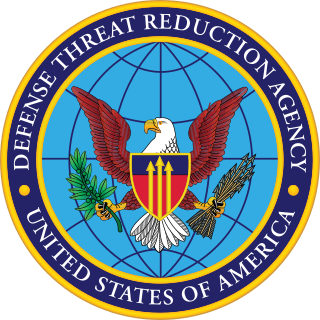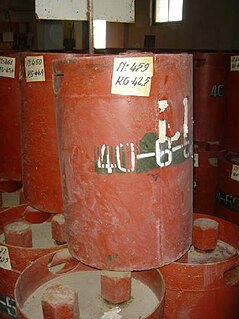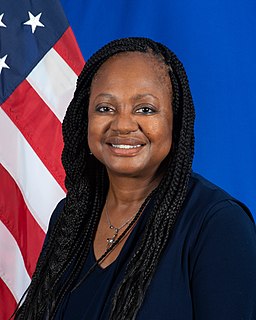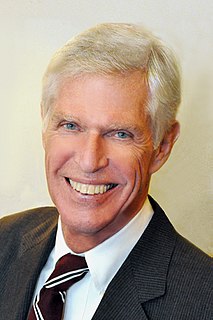
Richard Green Lugar was an American politician who served as a United States Senator from Indiana from 1977 to 2013. He was a member of the Republican Party.

Samuel Augustus Nunn Jr. is an American politician who served as a United States Senator from Georgia (1972–1997) as a member of the Democratic Party.

START I was a bilateral treaty between the United States and the Soviet Union on the reduction and the limitation of strategic offensive arms. The treaty was signed on 31 July 1991 and entered into force on 5 December 1994. The treaty barred its signatories from deploying more than 6,000 nuclear warheads and a total of 1,600 intercontinental ballistic missiles (ICBMs) and bombers.
William C. Potter is a Professor of Nonproliferation Studies and Director of the James Martin Center for Nonproliferation Studies at the Middlebury Institute of International Studies at Monterey (MIIS). He also directs the MIIS Center for Russian and Eurasian Studies.

As the collapse of the Soviet Union appeared imminent, the United States and their NATO allies grew concerned of the risk of nuclear weapons held in the Soviet republics falling into enemy hands. The Cooperative Threat Reduction (CTR) Program was an initiative housed within the Defense Threat Reduction Agency (DTRA). The CTR program is better known as the Nunn–Lugar Act which was authored and cosponsored by Sens. Sam Nunn (D-GA) and Richard Lugar (R-IN). This Act was created in 1986 in a congressional meeting. According to the CTR website, "the purpose of the CTR Program is to secure and dismantle weapons of mass destruction and their associated infrastructure in former Soviet Union states." An alternative explanation of the program is "to secure and dismantle weapons of mass destruction in states of the former Soviet Union and beyond".

The Defense Threat Reduction Agency (DTRA) is an agency within the United States Department of Defense (DoD) and is the official Combat Support Agency for countering weapons of mass destruction. According to the agency's Strategic Plan for Fiscal Years 2018 to 2022, the DTRA mission "enables DoD and the U.S. Government to prepare for and combat weapons of mass destruction and improvised threats and to ensure nuclear deterrence." The agency is headquartered in Fort Belvoir, Virginia.

George Peter Nanos Jr. is a retired vice admiral in the United States Navy and former director of the Los Alamos National Laboratory.
The USSTRATCOM Center for Combating Weapons of Mass Destruction (SCC-WMD) is a United States Strategic Command center built in cooperation with the Defense Threat Reduction Agency (DTRA).

The Bureau of International Security and Nonproliferation (ISN) is a bureau within the United States Department of State responsible for managing a broad range of nonproliferation and counterproliferation functions. The bureau leads U.S. efforts to prevent the spread of weapons of mass destruction and their delivery systems.

Albania once possessed a stockpile of weapons of mass destruction. This stockpile of chemical weapons included 16,678 kilograms (36,769 lb) of mustard agent, lewisite, adamsite, and chloroacetophenone.
In arms sales and black market activities, non-state transfers are transactions of weapons or other goods - material or non-material - where neither party involved is a government. This is in contrast to the usual practice of arms sales, where a government purchases arms from another government or from private industry. This is also in contrast to situations where a government may provide arms to a non-state actor, such as a separatist movement or terrorists.

Gloria Charmian Duffy is a former U.S. Department of Defense official, businesswoman and nonprofit executive. Since 1996, she has been the president and CEO of the Commonwealth Club of California, America's largest and oldest public forum, founded in 1903. From 2010 to 2017 she led the acquisition, financing, design, entitlements and construction of the club's first headquarters building, at 110 The Embarcadero in San Francisco. The grand opening for the club's new building took place on September 12, 2017. The building received a 2016 California Heritage Council award for historic preservation.
This article deals with activities of the U.S. Central Intelligence Agency, specifically dealing with arms control, weapons of mass destruction (WMD) and weapons proliferation. It attempts to look at the process of tasking and analyzing, rather than the problem itself, other than whether the CIA's efforts match its legal mandate or assists in treaty compliance. In some cases, the details of a country's programs are introduced because they present a problem in analysis. For example, if Country X's policymakers truly believe in certain history that may not actually be factual, an analyst trying to understand Country X's policymakers needs to be able to understand their approach to an issue.
Project Sapphire was a successful 1994 covert operation of the United States government in cooperation with the Kazakhstan government to reduce the threat of nuclear proliferation by removing nuclear material from Kazakhstan as part of the Cooperative Threat Reduction Program, which was authorized by the Soviet Nuclear Threat Reduction Act of 1991.
A Joint Task Force for Elimination (JTF-E) headquarters was a concept for a military task force headquarters staffed by joint personnel for the purpose of conducting WMD Elimination operations through command and control of joint elimination enablers such as nuclear disablement teams, CBRN Response Teams, radiation assessment teams, and medical laboratories. A JTF-E headquarters may be formed per Joint Publication 3-40 one of two ways: 1) An existing headquarters designated by a Combatant Commander with Joint Elimination Coordination Element (JECE) augmentation and 2) Joint Forces Command (JFCOM) establishing a JTF-E by utilizing the JECE and another existing headquarters.

Andrew Charles Weber was the Assistant Secretary of Defense for Nuclear, Chemical & Biological Defense Programs, whose areas of responsibility are US nuclear, chemical and biological defense programs. Appointed by President Obama, he was confirmed by the U.S. Senate on 18 May 2009 and served until 1 October 2014.

Bonnie Denise Jenkins is an expert on arms control and nonproliferation of weapons of mass destruction and currently serves as the Under Secretary of State for Arms Control and International Security Affairs. During the Obama Administration, she was the U.S. Department of State's Coordinator for Threat Reduction Programs in the Bureau of International Security and Nonproliferation.

Soviet Nuclear Threat Reduction Act of 1991, 22 U.S.C. § 2551, was chartered to amend the Arms Export Control Act enacting the transfer of Soviet military armaments and ordnances to NATO marking the conclusion of the Cold War. The Act sanctions the Soviet nuclear arsenal displacement shall be in conjunction with the implementation of the Treaty on Conventional Armed Forces in Europe. It funds the Nunn–Lugar Cooperative Threat Reduction program.

Soviet Scientists Immigration Act of 1992 granted authorization for engineers and scientists from the post-Soviet states to acquire employment within America. The Act of Congress implemented specific provisions of the Immigration and Nationality Act providing United States visas for former Soviet Union foreign nationals classified as scientific immigrants being employed in the United States.

Harold Palmer Smith Jr. is an American professor, consultant, and expert on defense policy. He was Assistant to the Secretary of Defense from June 1993 to March 1996, when the name of the position changed to Assistant Secretary of Defense for Nuclear, Chemical & Biological Defense Programs, and remained in the position until January 1998.













